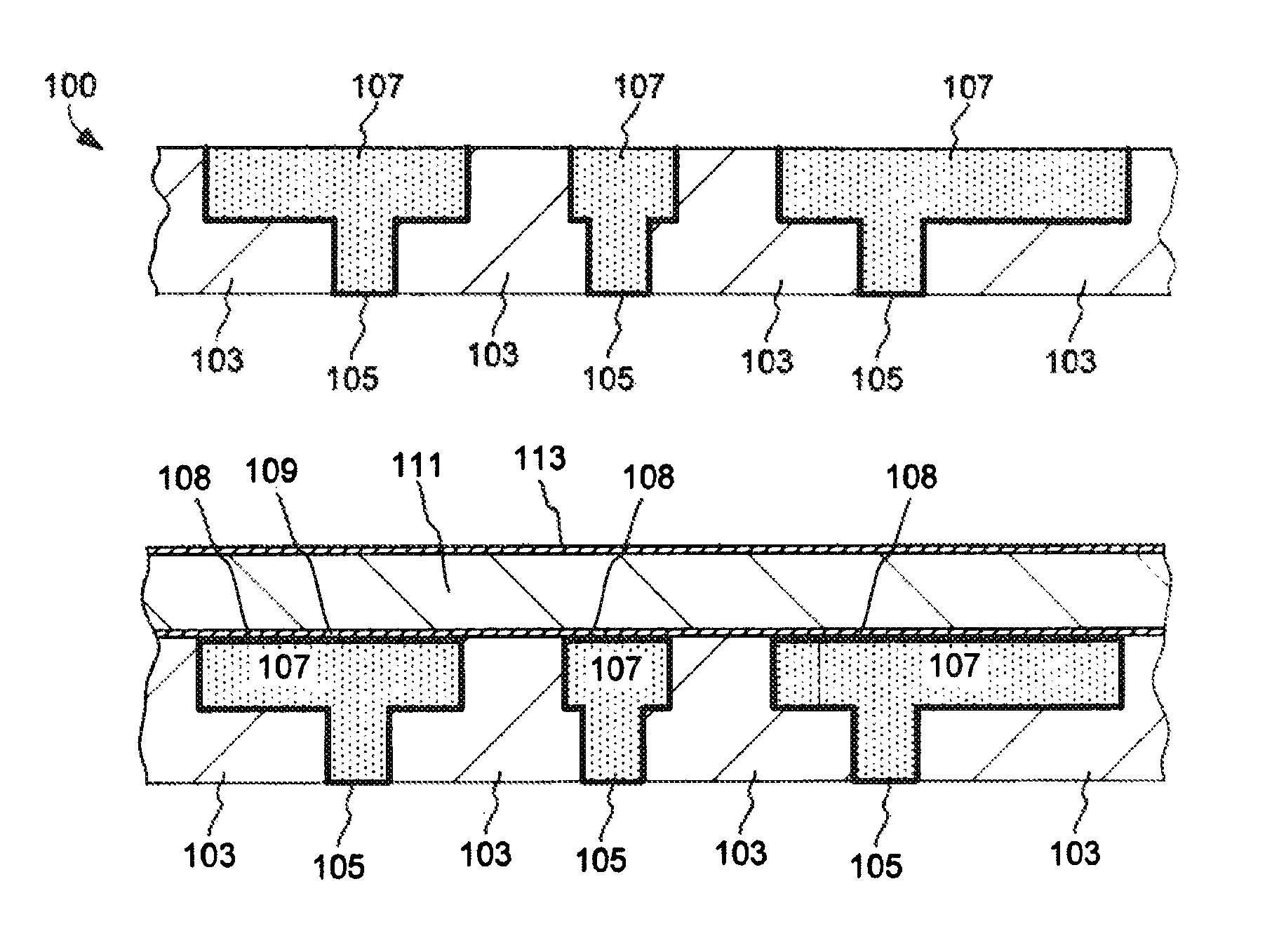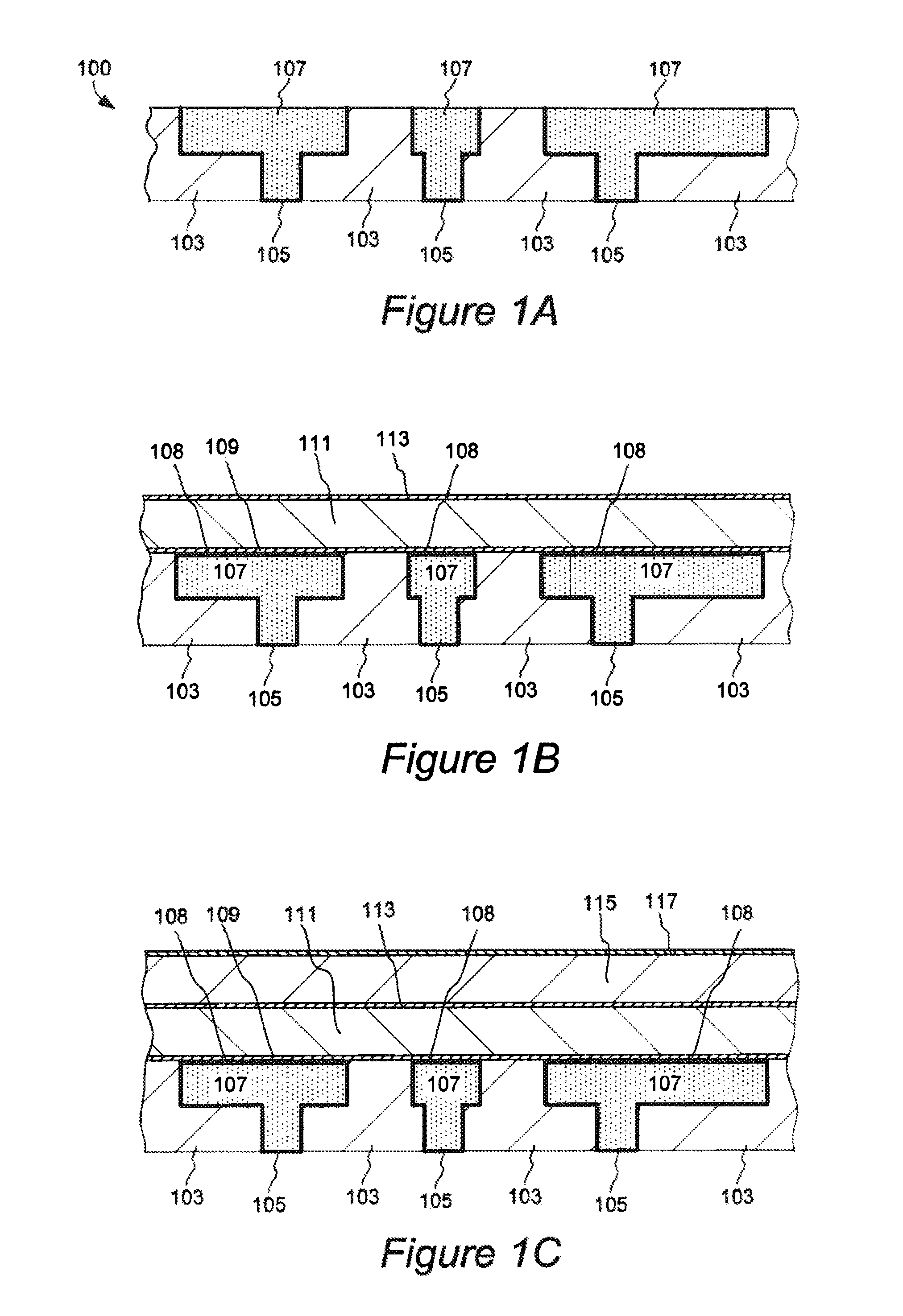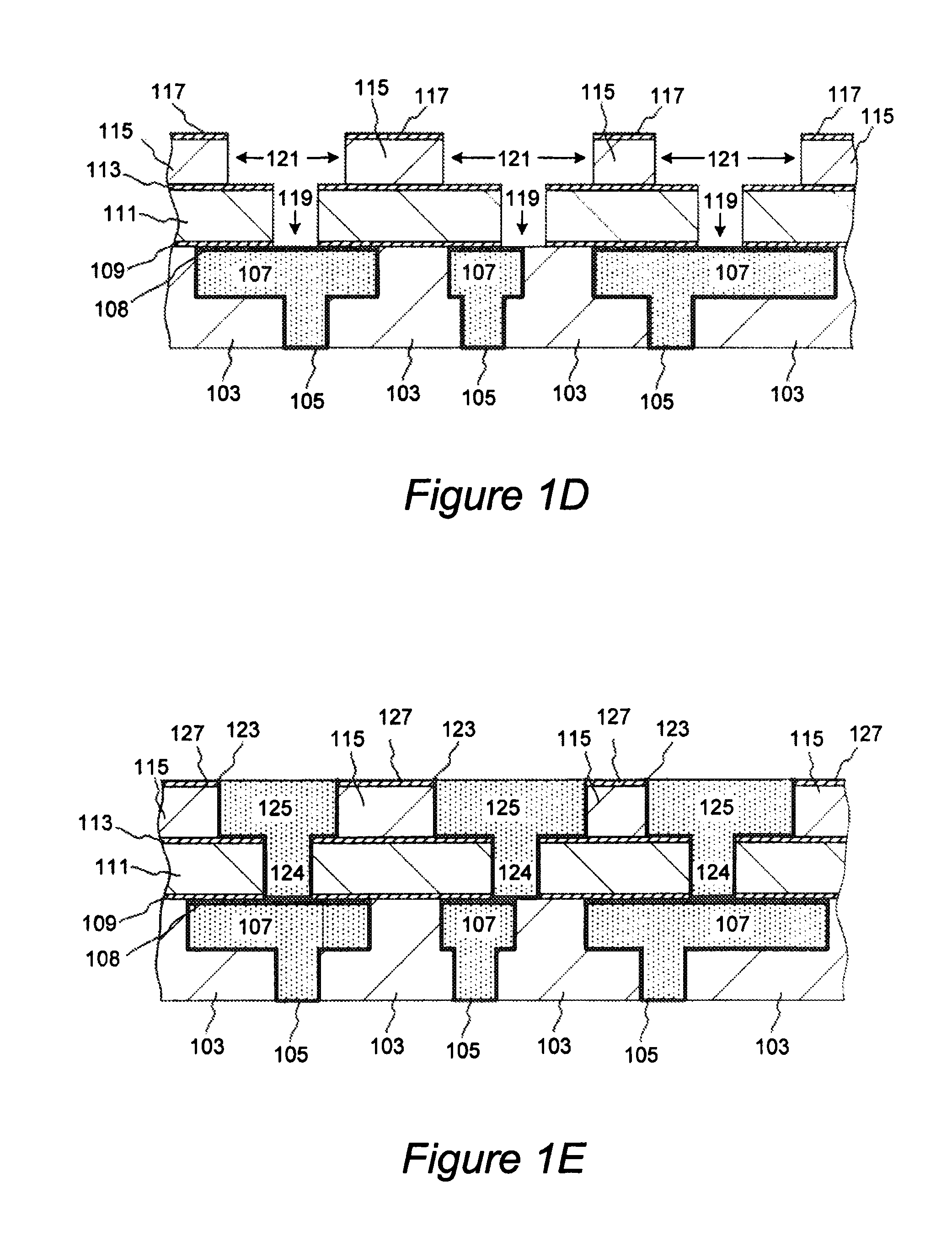Interfacial capping layers for interconnects
a technology of interconnects and capping layers, which is applied in the direction of solid-state devices, basic electric elements, semiconductor devices, etc., can solve the problems of void formation, failure of devices, and electromigration failure of interconnects, and achieve the effects of increasing interconnect resistance, increasing interconnect resistance, and improving electromigration performance of interconnects
- Summary
- Abstract
- Description
- Claims
- Application Information
AI Technical Summary
Benefits of technology
Problems solved by technology
Method used
Image
Examples
experimental examples
[0155]Certain disclosed embodiments were tested using 200 mm and 300 mm wafers. Aluminum atoms are detected on Cu surface having Cu—O surface bonds after exposing Cu to TMA at wafer temperature between 80 to 200° C. No plasma is used prior to and during TMA exposure. A direct plasma of NH3 is used for post-treatment after TMA exposure. Aluminum and oxygen atoms are detected at the interface of SiC / Cu layers for wafer treated with TMA prior to SiC deposition. There is no significant Al atom diffusion into SiC Cu bulk films after 400° C. 12 hr thermal annealing. In addition, there is no increase in Cu resistance upon TMA exposure and after 400° C. 12 hr thermal annealing. These results indicate that Al atoms on Cu surface are immobile. Film adhesion of SiC on Cu measured by 4-point bending technique shows significant improvement so that no delamination is observed at SiC / Cu interface.
[0156]In one example, the wafer comprising copper having surface oxide was preheated in N2 for 40 seco...
PUM
| Property | Measurement | Unit |
|---|---|---|
| Temperature | aaaaa | aaaaa |
| Thickness | aaaaa | aaaaa |
| Diffusion barrier | aaaaa | aaaaa |
Abstract
Description
Claims
Application Information
 Login to View More
Login to View More - R&D
- Intellectual Property
- Life Sciences
- Materials
- Tech Scout
- Unparalleled Data Quality
- Higher Quality Content
- 60% Fewer Hallucinations
Browse by: Latest US Patents, China's latest patents, Technical Efficacy Thesaurus, Application Domain, Technology Topic, Popular Technical Reports.
© 2025 PatSnap. All rights reserved.Legal|Privacy policy|Modern Slavery Act Transparency Statement|Sitemap|About US| Contact US: help@patsnap.com



